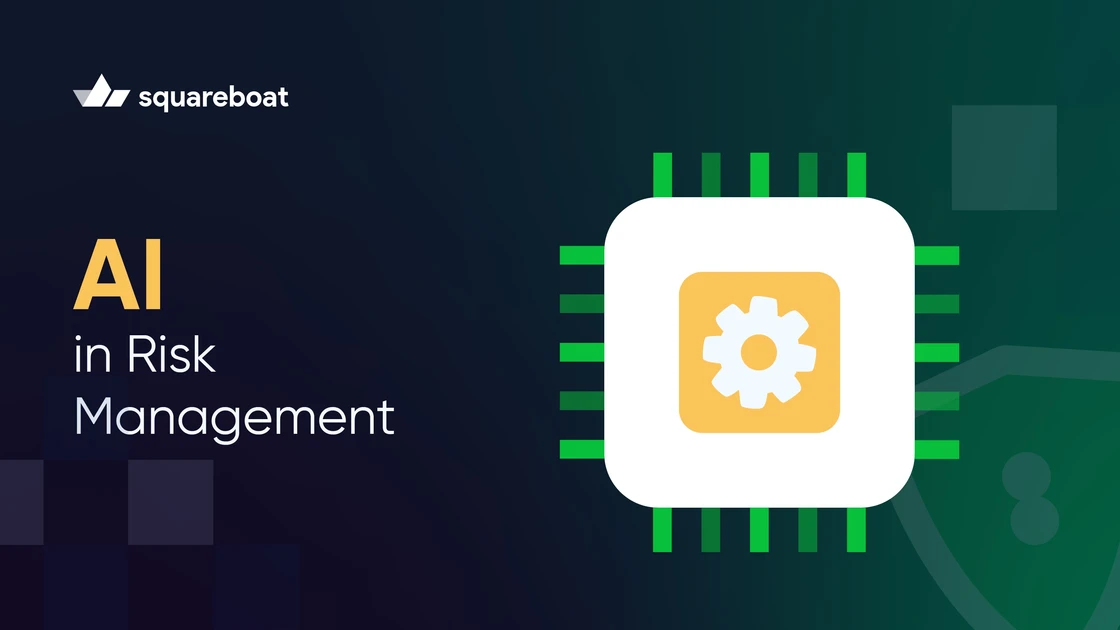Every business today operates in an unpredictable environment—markets shift fast, cyber threats evolve daily, and regulatory frameworks keep tightening. Traditional models can’t keep up. AI in risk management solves this gap by analyzing high-velocity data streams, identifying hidden anomalies, and triggering real-time responses. It transforms static controls into intelligent systems that adapt, learn, and scale across enterprise risk functions. This isn’t just automation—it’s a shift in how risk is measured, monitored, and mitigated.
What is AI in Risk Management?
AI in risk management means using machine learning, natural language processing, and advanced analytics to detect, assess, and mitigate risks—fast and at scale. These systems crunch massive real-time data sets—from transactional logs to regulatory documents—to surface anomalies, predict failures, flag compliance gaps, and automate decisions. Think of AI as a real-time risk radar powered by pattern recognition, probabilistic modeling, and contextual analysis. It doesn't guess—it learns from historical trends, adapts to new threats, and evolves as the risk landscape shifts.
Why is AI Needed in Risk Management?
In today’s hyper-connected and data-saturated environment, risk can come from anywhere—markets, machines, users, or external systems. Traditional models break under pressure. Here’s why machine-driven intelligence becomes essential:
1. Data Volume Outpaces Human Capacity
Risk signals now hide in billions of data points—from financial transactions and server logs to real-time sensor data and public feeds. No human team can parse that in real time. Machine learning models scale effortlessly and scan it all.
2. Static Models Miss Emerging Threats
Rule-based systems can’t detect new fraud patterns or zero-day exploits. ML-based risk engines evolve constantly. They learn from fresh data and adjust behavior dynamically—ideal for unknown-unknowns.
3. Latency Equals Loss
A delayed fraud detection costs millions. AI systems operate at sub-second latency. They trigger controls or shut off access before risk becomes exposure.
4. Contextual Risk Scoring is Essential
Not all anomalies are threats. AI uses behavioral profiling and pattern recognition to reduce noise. That means fewer false positives and more actionable alerts.
5. Regulatory Environments Demand Explainability
AI models embedded with explainability layers (like SHAP or LIME) help compliance officers trace how a decision was made, which is more critical in sectors like banking or insurance.
6. Operational Risk Requires Prediction, Not Reaction
Predictive analytics anticipates system failures, vendor defaults, or delivery delays. AI doesn’t just report risk. It forecasts it.
7. Cyber Risk is Adaptive
Adversaries use automation to bypass static defenses. AI counters that with behavior analytics, anomaly detection, and autonomous response playbooks.
Key Use Cases of AI in Risk Management
AI is redefining how risk is identified, measured, and mitigated—here’s where it’s delivering real impact:
1. Credit Risk Scoring
- AI models ingest borrower histories, spending behavior, and alternative data (e.g., mobile usage, utility payments) to generate dynamic credit scores.
- They outperform static scoring models by adapting to economic changes and borrower trends in real time.
Gradient boosting, neural networks, and clustering algorithms help uncover default risks across portfolios.
2. Real-Time Fraud Detection
- Supervised and unsupervised learning models track anomalies across millions of transactions per second.
- Behavioral biometrics, geolocation mismatches, velocity checks, and spending pattern deviations trigger real-time fraud alerts.
Graph neural networks detect collusive fraud rings by mapping interconnected entities.
3. Cyber Threat Intelligence
- AI systems process log files, DNS traffic, and user behavior analytics to detect threats like ransomware, phishing, or privilege escalation.
- Reinforcement learning enhances intrusion detection systems (IDS) by continuously improving threat response accuracy.
- Large-scale SIEM systems integrate AI to correlate events across endpoints, cloud, and network infrastructure.
4. Regulatory Compliance Automation
- Natural Language Processing (NLP) reads regulatory texts, flags new mandates, and aligns internal policies.
- Named Entity Recognition (NER) helps extract obligations from complex legal documents.
- Semantic similarity models compare internal controls against global frameworks like Basel III, MiFID II, and GDPR.
5. Operational Risk Monitoring
- AI models forecast system outages, supplier disruptions, or process failures using time-series and sensor data.
- Predictive maintenance algorithms reduce downtime by pre-empting hardware failure.
- Incident clustering algorithms help root-cause analysis of process breakdowns.
6. Third-Party Risk Analysis
- AI aggregates and analyzes structured and unstructured external data (news, legal filings, ESG reports, social media) to assess vendor risk.
- Sentiment analysis and entity disambiguation models flag financial instability, geopolitical exposure, or reputational concerns.
- Risk scoring engines update in real-time based on new events or market shifts.
7. Anti-Money Laundering (AML)
- AI filters transaction chains using graph analytics to trace hidden connections.
- Deep learning models detect layering, smurfing, and structuring patterns in fund flows.
- Integration with KYC data strengthens identity validation across high-risk entities.
Challenges of AI in Risk Management
Implementing AI in risk management sounds powerful, but it’s far from plug-and-play. Let’s break down the real, technical challenges that risk leaders face:
1. Data Quality and Labeling Bottlenecks
AI models thrive on structured, clean, and labeled datasets. Risk data is usually fragmented across legacy systems, unstructured formats, and manual reports. Inconsistent taxonomies and missing attributes degrade model performance. Without accurate risk exposure tagging, predictive accuracy collapses.
2. Model Interpretability and Explainability
Deep learning models (e.g., LSTMs, CNNs, transformer-based classifiers) often work as black boxes. In regulated environments, risk teams can’t use models they can’t explain. Feature importance scores, SHAP values, and LIME approximations help—but they’re not always audit-grade. This hinders model deployment in high-stakes environments.
3. Regulatory Non-Compliance Risk
Basel III, GDPR, and SR11-7 mandate traceability, fairness, and model governance. Non-compliance means fines or legal exposure. Deploying opaque or unvalidated ML models without lineage tracking, version control, and bias testing violates these norms.
4. Bias in Training Data
Skewed loan defaults, underreported fraud events, or historically biased decisions introduce systemic model bias. Models trained on this data reinforce discrimination, especially in credit scoring, claims, or onboarding risk. Fairness metrics like disparate impact ratio or equal opportunity difference become essential for compliance.
5. Real-time Processing Constraints
Risk scenarios like fraud detection, insider threats, or system failures demand real-time inferencing. Deploying models with low-latency SLAs on edge nodes or cloud-native architectures requires serious engineering. Latency above 200ms could mean missed threats.
6. Model Drift and Data Drift
Market behavior, fraud patterns, or regulatory rules evolve constantly. If models are not retrained frequently or monitored for data drift (e.g., using KL divergence or PSI metrics), prediction accuracy decays fast. Drift detection pipelines are still immature in many setups.
7. Infrastructure and Tooling Gaps
Running gradient-boosted models or neural nets on large volumes of compliance or operational risk data needs scalable MLOps stacks. Most enterprises lack distributed training capabilities, CI/CD for ML models, or hardened API endpoints. This slows down experimentation and deployment.
8. Lack of Cross-functional Collaboration
Risk teams speak control language. Data scientists speak in loss functions and hyperparameters. Without domain-contextual feature engineering or risk-aware model evaluation metrics (like Type II risk cost), models miss the mark in production.
Future of AI in Risk Management
The future of AI in risk management is moving fast toward precision, automation, and control. Here’s a look at what’s coming—clear, focused, and technically grounded:
- Explainable Models Will Be Mandatory: Black-box models won’t cut it anymore. Expect full-stack XAI (Explainable AI) frameworks that log model logic, decision paths, and training sets. Regulatory bodies will demand transparency and auditability across all algorithmic risk systems.
- Model Risk Management Will Go Autonomous: Static model validations will be replaced with continuous model monitoring pipelines. These pipelines will auto-check drift, overfitting, bias, and fairness in production. Think MLflow + custom validation agents running 24/7.
- Federated Risk Intelligence Networks: Risk models will train on decentralized datasets without moving sensitive data. Federated learning will enable banks and insurers to collaborate on fraud detection without breaking data privacy rules like GDPR or HIPAA.
- Synthetic Data for Stress Testing: AI-generated synthetic datasets will simulate rare but high-impact edge cases. These help in scenario modeling, stress-testing market shocks, or cyber threats where historical data doesn’t exist.
- NLP Pipelines for Real-Time Regulatory Parsing: Compliance teams will deploy domain-tuned LLMs that parse, extract, and map new regulations into internal risk frameworks—almost instantly. Expect SEC updates and ISO changes to be integrated within minutes.
- Quantum-Aware Risk Engines: As quantum computing matures, next-gen risk models will simulate complex financial systems using quantum machine learning (QML). This is crucial for predicting tail-risk events in high-dimensional datasets.
- Autonomous Decision-Making Agents: AI copilots for risk managers will go live. These are policy-aware agents that monitor risk signals, recommend control actions, and simulate the impact of every move before you even act.
Unified Risk Graphs: Graph-based ML will power enterprise-wide risk ontologies, linking IT assets, financial positions, suppliers, and legal obligations. This gives teams one real-time, risk-weighted map of operations.
Conclusion
AI-driven risk models now operate at machine speed across real-time data streams from transactions, endpoints, vendors, and market feeds. They detect anomalies, predict exposure, and prioritize threats before manual systems even flag them. But these systems must be auditable, bias-tested, and aligned with governance protocols. Success depends on robust model validation, continuous learning pipelines, and strong collaboration between risk analysts, compliance officers, and data scientists. AI isn’t replacing traditional risk functions—it’s reshaping them into faster, smarter, and more adaptive engines


